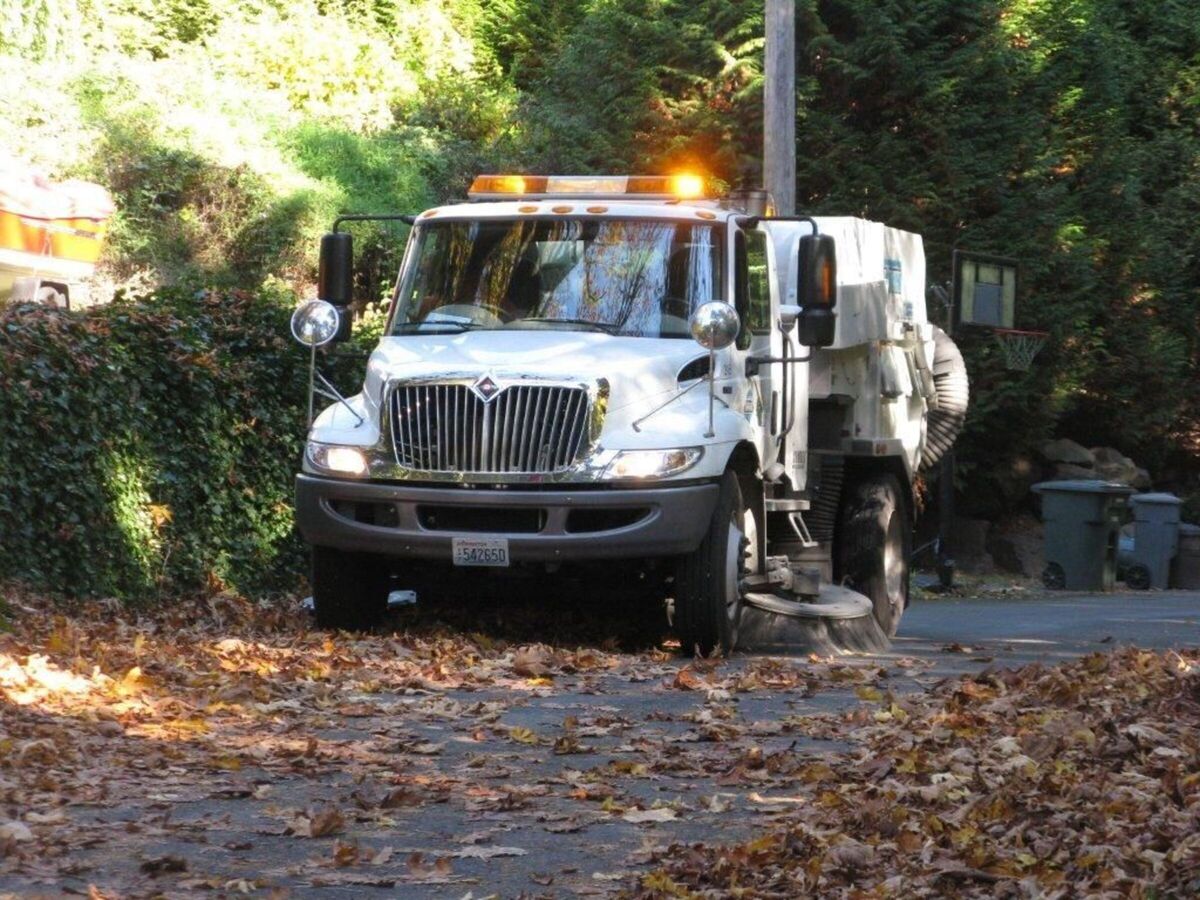As we move into the rainy season and leaves start to fall, the Public Works Department starts turning its attention to the City’s drainage system. It is time to check the storm drains and clear leaves from them to keep the stormwater flowing. Street sweeping is a component of the drainage system maintenance and is perhaps the most visible to the citizens. The City is encouraging residents to clear any blocked storm drains that are adjacent to or in front of their property keeping in mind:
- Please do not create piles of leaves expecting the sweeper to sweep them away. Use your yard waste tote so they can be composed. Wet leaves are surprisingly heavy, so be careful not to overexert yourself.
- DO NOT rake or blow leaves and debris into the street, ditchlines, or rights-of-way.
- Municipal Code 16.25.025 makes it illegal to collect lawn clippings, leaves or branches and discharge them into the path of surface water.
- The sweeper cannot handle large piles of leaves. If the sweeper encounters large piles of leaves, the driver must drive around them, or the pile of leaves could damage the street sweeper and the process may come to a screeching halt.
- Never try to clear a storm drain or culvert if there is moving water greater than knee deep, and always be wary of traffic when working near a roadway.
If flooding is severe, or you find evidence of dumping, please call 206-368-5440. For more information on flood preparation, click here. In need of sandbags? Our Public Works has some prepared and ready to grab at the following locations, view by clicking here.
What can you do with leaves?
- Turn your leaves into beneficial compost. Autumn leaves are a great source of high-carbon material for your compost pile. Alternate layers of shredded leaves with the other materials you normally add to your compost pile (scraps from fruits and veggies, grass clippings, weeds, etc.) and let it sit over the winter. Whenever you think about it, aerate or turn the pile. Your compost will be ready to use by spring.
- Shred leaves and use them as mulch on vegetable gardens and flower beds, around trees and shrubs, and in containers. Just add a 2- to 3-inch layer of shredded leaves to the beds, keeping the mulch from directly touching the stems and trunks of the plants. The mulch retains moisture in the soil, stays cool, and limits weed seed germination.
- Use a mulching mower to shred your leaves once a week until they have all fallen, then "leave" them on your yard. While the leaves break down during winter, they'll shade your soil and provide it with nutrients, which means fewer weeds to deal with in spring.
- Hoard them! Save a bag or two of leaves in your garage over the winter. In spring, adding that brown material to your compost pile makes your compost just right for the season.
Additional Info on Flood Preparation...
